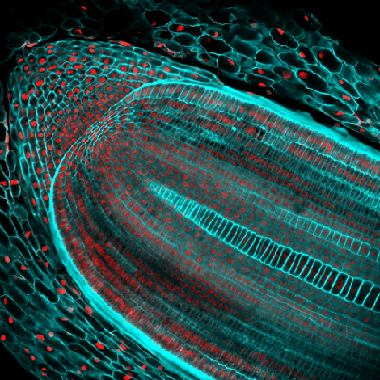
|
Published: 27 February 2012
Plant strength key to cracking biofuels?
Cellulose in plant cell walls contains sugars used to manufacture biofuels. However, this cellulose also resists decomposition, making it difficult to extract the sugars for use. New research into how plants form cellulose may hold the key.
A plant's cell wall serves essential functions including mechanical support, allowing the plant to withstand the onslaughts of wind and weather, and permitting some plants to grow to great heights – hundreds of feet for trees such as mountain ash (Eucalyptus regnans) – and providing an essential barrier against invading pathogens.
A structural molecule called cellulose is necessary for the manufacture of plant cell walls. The individual sugar chains that make up cellulose bond to each other to make a semi-crystalline fibre that gives cellulose its rigidity and tensile strength. This crystallinity also makes cellulose resistant to digestion by microbes, a process that is needed to liberate sugars from cellulose so they can be converted to useful fuels.
Until now the mechanisms controlling this crystallinity have been poorly understood. New research published in Proceedings of the National Academy of Sciences reveals key information about this process, as well as a means to reduce it.
The cellulose synthesising complex is driven by cellulose synthase proteins. The research team developed a method for observing different aspects of the complex, by tagging it with a fluorescent marker and imaging the tagged protein using a technique that allows individual complexes to be seen and studied in living cells, producing an unusually high level of resolution.
The team found some molecules in this process that actually interfere with plant cell wall building. The presence of these molecules is the result of a mutation in the genes that encode certain cellulose synthase proteins. The mutant genes discovered by the team produced cellulose with lower crystallinity. This cellulose was more easily digested, the process necessary for conversion to fuels.
‘The team made a connection between the structure of the proteins that produce cellulose, and the structure of their product,’ says co-author Dr Ehrhardt of Carnegie University.
‘This is a first step in understanding how this important property of cellulose may be regulated, opening possibilities for development of useful biomaterials and for cellulosic biofuel crops.’
Source: The Carnegie Institution for Science




